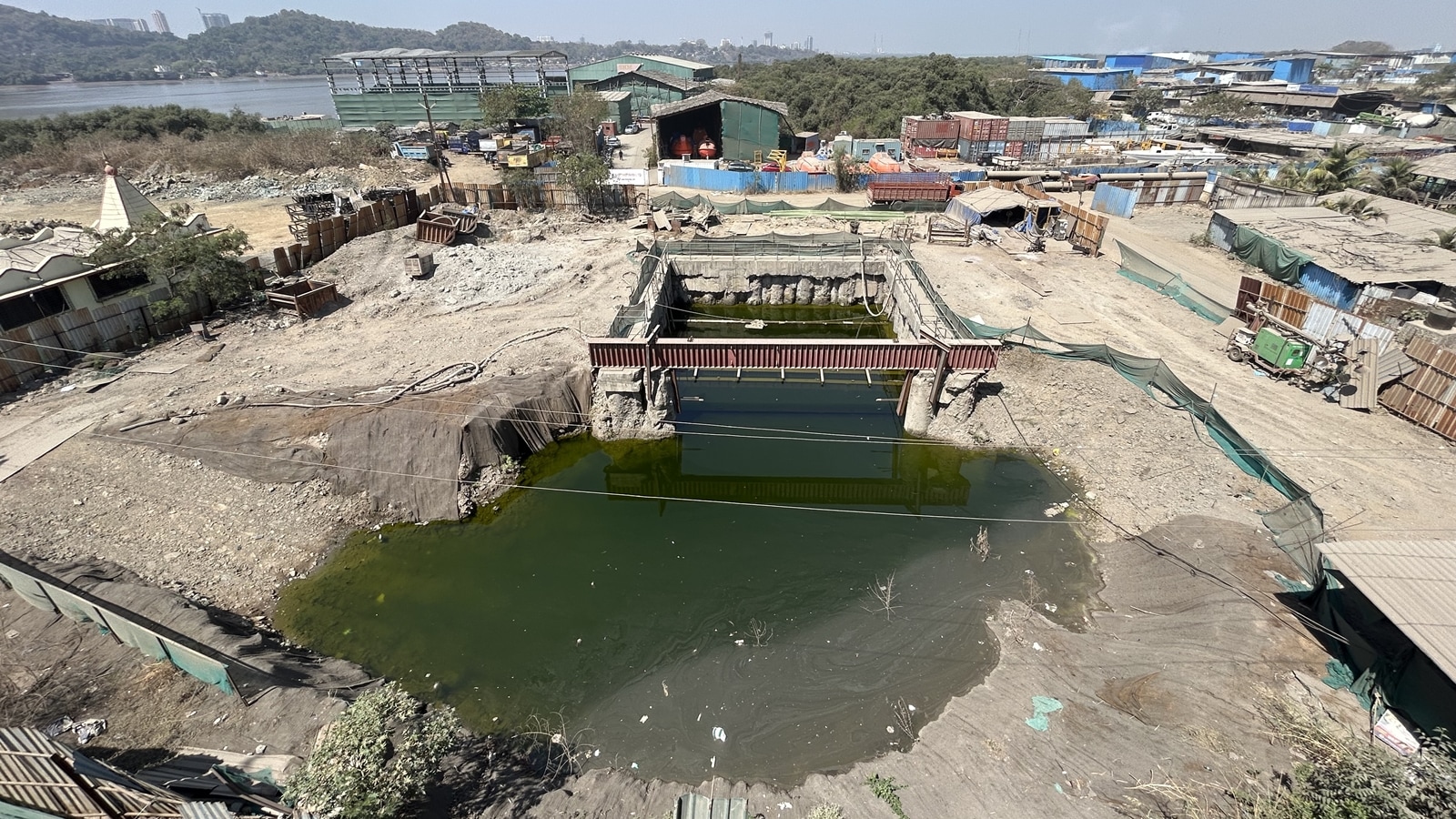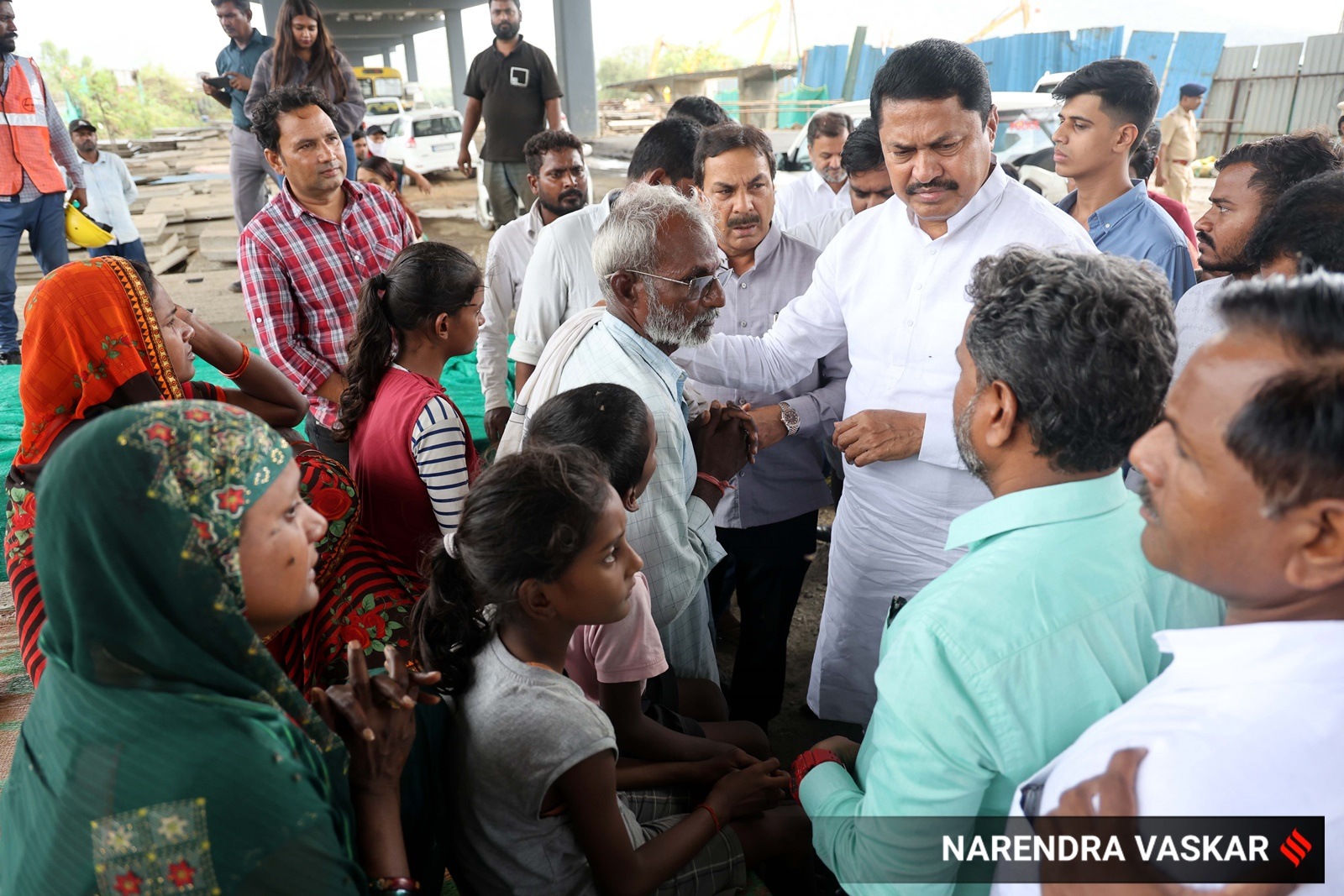‘My son’s body never found, did last rites with cast made of atta’: Months after man buried with excavator in Palghar, an endless wait
On May 29, 2024, Rakesh and his eight-tonne excavator were buried when one of the concrete walls of a trench he was working in collapsed on him.
 His body not found, Yadav’s family performed his funeral using his photograph. (Express Photo)
His body not found, Yadav’s family performed his funeral using his photograph. (Express Photo)In the end, closure — or some sense of it — came in the form of a five-foot-something cast made of atta and a garlanded photograph of Rakesh Yadav placed on a bamboo frame.
Months after 35-year-old Rakesh and his excavator were buried under 60 feet of mud and rubble at the site of a water supply project in Palghar’s Navghar area, over 1,600 kilometers away, at Azamgarh in Uttar Pradesh, Rakesh’s family carried out his last rites.
“The pandit said since the body was never found, we can get a cast made to roughly match Rakesh’s height. We made one with atta, put his photograph on it and carried out the cremation,” says Rakesh’s father Balchandra, 62.
But for the family, the wait continues — this time, for a death certificate. Though the administration called off the search operations four months after the accident, the authorities are yet to officially declare Rakesh dead.
Rakesh’s brother-in-law, Santosh Yadav, says, “When we came to Vasai (in Palghar, soon after the accident), we spoke to several authorities there, but at that time, we were told that since the body had not been found, no one could issue a death certificate.”
 The site in Palghar, Maharashtra, where Rakesh Yadav was buried after a mishap in May 2024. (Express photo)
The site in Palghar, Maharashtra, where Rakesh Yadav was buried after a mishap in May 2024. (Express photo)
“Rakesh had invested some money in LIC policies, and his wife and three children need the money for their future, which is why his death certificate is very important for us. We will need the certificate in the future too, for other formalities,” he added.
When contacted on the matter of Rakesh’s death certificate, Collector and District Magistrate Govind Bodke directed The Indian Express to Resident Deputy Collector Subhash Bhagade, who said that Rakesh has “not been officially declared dead”. “I will understand the procedure and get back,” he added.
On May 29, 2024, Rakesh and his eight-tonne excavator were buried when one of the concrete walls of a trench he was working in collapsed on him. He was part of a team working to excavate a tunnel to lay a pipeline for a water supply project under the Mumbai Metropolitan Region Development Authority’s (MMRDA) Surya Regional Water Supply Scheme.
 The trench inside which Rakesh Yadav (inset) and his excavator lie buried. (Express Photo by Narendra Vaskar)
The trench inside which Rakesh Yadav (inset) and his excavator lie buried. (Express Photo by Narendra Vaskar)
Soon after the accident, a team of the National Disaster Relief Force, firemen from the Vasai Virar Municipal Corporation and personnel of the Indian Army’s Pune-based 269 Engineer Regiment launched an operation to locate Rakesh. As the news reached his family in Azamgarh, on May 30, Rakesh’s elderly parents, wife, three children, and other family members packed a few sets of clothes and boarded a train to Mumbai.
The family of nine, including Rakesh’s parents, his wife Sushila and their three children, besides other relatives, camped under a bridge, metres away from where the 35-year-old and the excavator lay buried under 60 feet of mud.
“We stayed at the site under the bridge for two months, hoping to see him, even if for the last time,” says Rakesh’s wife Sushila.
Rakesh’s brother-in-law Santosh claims that the authorities forced them to leave Palghar. “While we were there, we could follow-up with the authorities. So the search operations went on, even when the conditions were difficult and when it started to rain. But our presence at the site was adding to the pressure on the authorities since various politicians would visit us. So the authorities booked our tickets and asked us to leave by the end of July. They promised us that they would start the process of retrieving the body once the monsoon got over. But then they stopped looking for the body,” he says.
“Then chief minister Eknath Shinde and other politicians and authorities had promised us that Rakesh’s body, in whatever form, would be recovered and handed over to us,” says Rakesh’s father Balchandra, a farmer and small-time grocery shop owner. “But now nobody is answering our calls.”
 Rakesh Yadav’s wife Sushila and her three children at the accident spot. (Express photo by Narendra Vaskar)
Rakesh Yadav’s wife Sushila and her three children at the accident spot. (Express photo by Narendra Vaskar)
Collector Bodke said, “ We did everything in our capacity. We conducted the rescue operation for over four months before calling it off. It was difficult to recover his body because the creek near the site caused instability in the soil. One of the pillar walls (weighing over 900 tonnes) collapsed, and the remaining three pillars were shaking heavily. The agencies reviewed the situation, and there was a fear that the rescuers could also get trapped, so we had to call off the rescue operation.”
He said that a compensation of Rs 50 lakh was given to the family, and the company had facilitated a job for one of the family members.
According to the MMRDA website, the Rs 1,977.29 crore water project aims to supply water to residents of the Mira-Bhayander and Vasai-Virar City municipal corporations, as well as 27 other nearby villages. The contract was awarded to Larsen & Toubro Ltd. on May 26, 2017, at a cost of Rs 1,329.01 crore.
At the time of the incident, the work was taking place on the Mumbai-Ahmedabad highway, next to the Vasai creek, with the pipeline intended to pass underneath. Rakesh and the other workers had excavated up to 60 feet and had about 10 more feet to go when the incident occurred at 9.30 pm.
 Excavator operator Rakesh Kumar Yadav’s family members meeting Congress MLA Nana Patole. (Express photo by Narendra Vaskar)
Excavator operator Rakesh Kumar Yadav’s family members meeting Congress MLA Nana Patole. (Express photo by Narendra Vaskar)
Following the accident, construction work was halted near the creek for several months. However, after conducting a survey, in January this year, the authorities resumed work, but at a location that’s around a kilometer away from the previous site.
A worker at the site says, “We have now started work on the Mira-Bhayander side of the creek (earlier, the digging work was being carried out on the Palghar side of the creek). The condition here is more favorable, and we have already dug about six feet.”
MMRDA officials refused to comment.
While a case has been registered at the Naigaon police station, an official said no action has been taken against anyone for the May 2024 accident. “We are still waiting for reports from the Veermata Jijabai Technological Institute that will help us determine the cause of the incident and those responsible.”
Back in Azamgarh, Rakesh’s wife says she will have to live with regrets. “We spoke to him an hour before the incident and were planning to speak again later that night… If I had known that my husband’s work involved so much risk, I would have never allowed him to leave home,” she says.







